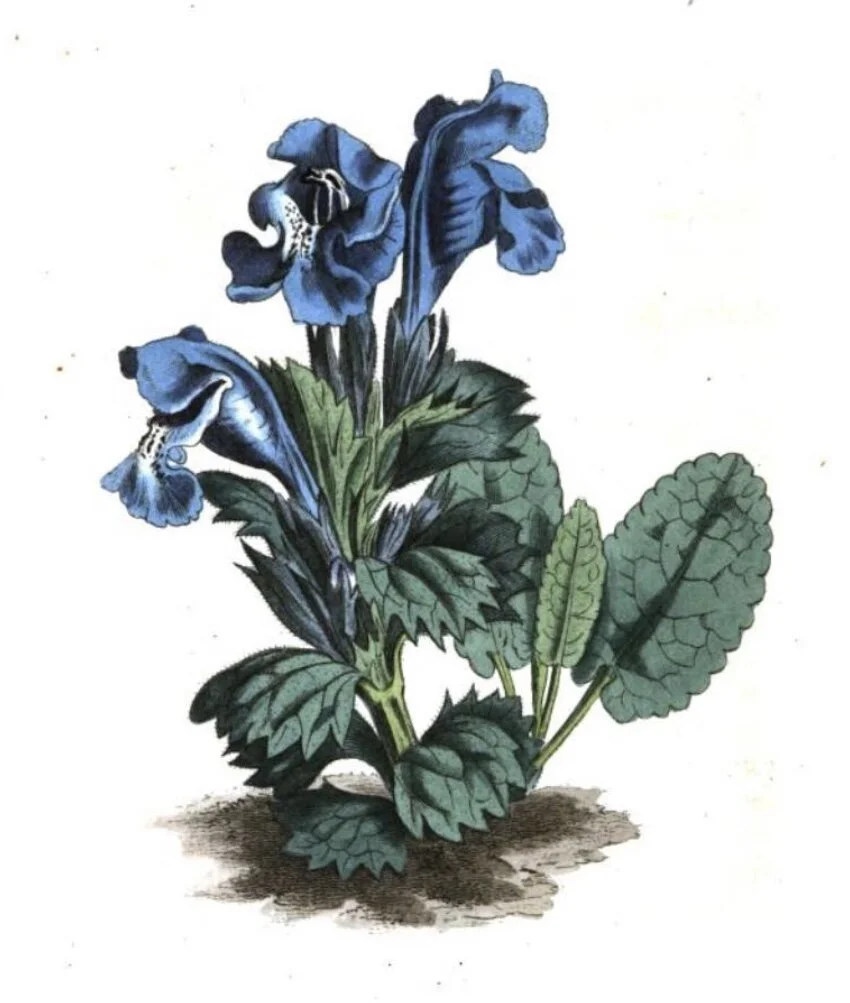Altai Dragonhead
Altai Dragonhead
ALTAI DRAGONHEAD
Dracocephalum rupestre
One of the most beloved little species of the genus, and one that has proven quite elusive to gardeners for centuries. Listed periodically in gardening literature and catalogs since at least the 16th century, it tends to fare poorly in the long term outside of its native habitat, which is the rocky scree and forest margins of the Altai Mountains in Russia, Mongolia and China.
Attractive rhizomatous plants grow to no more than 6"-8", and require sharply drained soils in full sun or part shade. They are extremely susceptible to damage by slugs and are best in a rock garden or along stone or gravel paths. A generous mulch of horticultural grit is highly recommended in areas hosting slugs and snails. As is the nature with wild species, growth and flowers are variable. Here in the Northeast our acidic soils tend to produce uniformly blue blooms, but a quick search will reveal plants with pink bracts and purple flowers. All variations are worthwhile in both ornamental and edible landscapes.
The basal foliage of this species is easily mistaken for Betony, and the species is occasionally listed as “Chinese Betony". Indeed the ethnobotanical uses of this species are nearly identical to those of Stachys officinalis, and it is perhaps impossible to say which species was first used for medicinal purposes. Regardless, the dried leaves of Altai Dragonhead may be used like those of Betony and make a lovely tea. The inclusion of dried flowers makes for a beautiful presentation when gifted in a jar or tin.
These seeds germinate erratically and are best started indoors in late winter or early spring. Tuck just beneath the surface of moist soil, pressing to keep seed snug, and mist generously. Kept moist in bright light at cool room temperature, seeds will germinate over the course of several weeks, with the first sprouting within a week or two. Once seedlings have true leaves, prick out to grow on in individual 3" pots at cool room temperature in bright light. Harden off before transplanting into the garden around the date of the last frost.
Hardy to at least zone 4, but very particular about soil. These plants will not overwinter in wet soils. Drainage is key. Though technically perennial, literature suggests that they are short-lived and reluctant to self-sow. Collect seeds and start a few seedlings each year if you hope to keep this species in your garden for years to come.
Packet contains at least 30 seeds.
